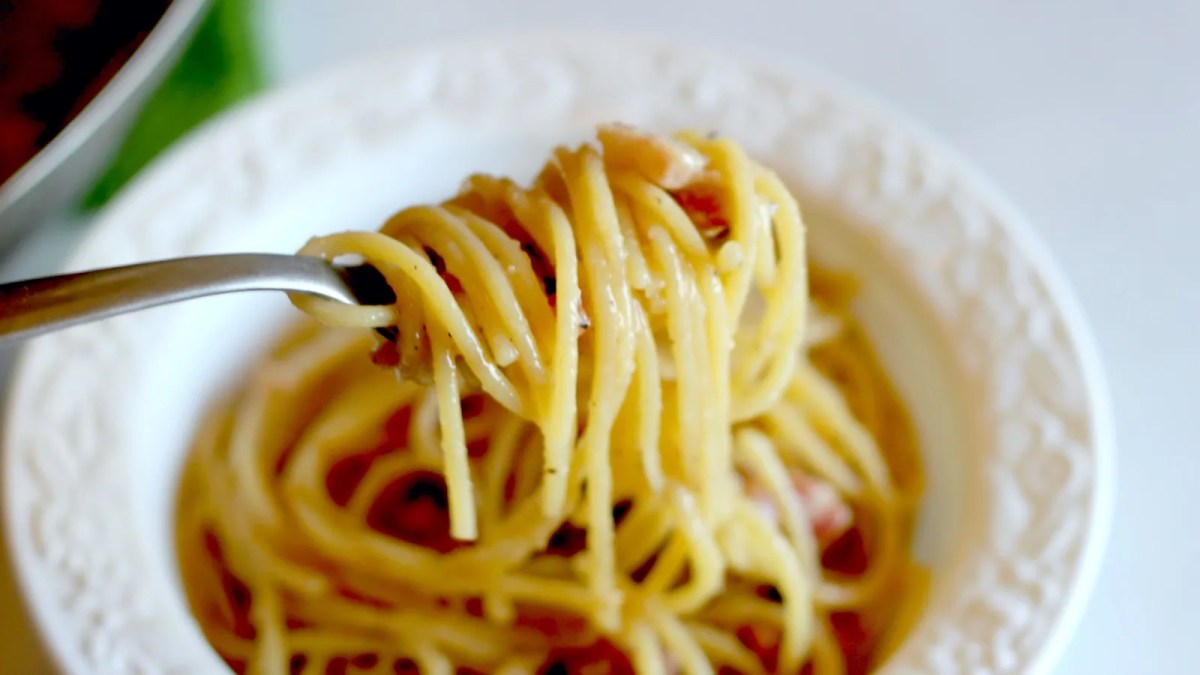Dreamy, luscious pasta dishes often conjure images of rich, creamy sauces, but what if you’re looking for a delicious alternative that skips the eggs? This guide unveils the secrets to crafting irresistibly creamy pasta, showcasing a variety of techniques and dairy-free options. Prepare to explore a world of velvety textures and vibrant flavors, all without relying on eggs for that luxurious mouthfeel. You’ll discover innovative ways to achieve that perfect creaminess, from utilizing different dairy products to embracing the surprising creaminess of pureed vegetables. Get ready to elevate your pasta game!
We’ll delve into the nuances of creating three distinct creamy pasta sauce bases, each with its unique personality and visual appeal. Learn how to expertly pair pasta shapes with these sauces, maximizing the textural experience. Detailed recipes, complete with step-by-step instructions and mouthwatering visuals, will guide you through the process of creating a perfectly creamy tomato pasta dish, along with variations to cater to diverse tastes and dietary needs. Prepare to be amazed by the versatility and deliciousness of egg-free creamy pasta!
Creamy Pasta Sauce Bases Without Eggs
Creamy pasta sauces are a culinary delight, offering a rich and satisfying experience. Traditionally, eggs are used to create this creaminess, but delicious and equally luxurious sauces can be achieved without them. This section explores three distinct creamy pasta sauce bases that rely on alternative ingredients to achieve that coveted velvety texture and depth of flavor.
Creamy Pasta Sauce Bases Without Eggs
The following table details three distinct creamy pasta sauce bases, each offering a unique flavor profile and texture. The recipes are designed for ease of preparation and use readily available ingredients.
| Sauce Name | Ingredients | Preparation | Serving Suggestions |
|---|---|---|---|
| Creamy Parmesan Sauce | 1 cup heavy cream, ½ cup grated Parmesan cheese, 2 cloves garlic (minced), 2 tablespoons butter, salt and pepper to taste | Melt butter in a saucepan over medium heat. Add garlic and cook until fragrant (about 30 seconds). Pour in heavy cream and bring to a simmer. Reduce heat to low and stir in Parmesan cheese until melted and smooth. Season with salt and pepper. | Pairs perfectly with fettuccine, tagliatelle, or rigatoni. Garnish with fresh parsley or black pepper. |
| Creamy Tomato and Ricotta Sauce | 1 (28 ounce) can crushed tomatoes, 1 cup ricotta cheese, ¼ cup heavy cream, 1 tablespoon olive oil, 1 teaspoon dried oregano, salt and pepper to taste | Heat olive oil in a saucepan over medium heat. Add crushed tomatoes and oregano, and simmer for 15 minutes, stirring occasionally. Stir in ricotta cheese and heavy cream until smooth and creamy. Season with salt and pepper. | Excellent with penne, rotini, or shells. A sprinkle of fresh basil adds a vibrant touch. |
| Creamy Mushroom and White Wine Sauce | 1 pound cremini mushrooms (sliced), ½ cup dry white wine, ½ cup heavy cream, 2 tablespoons butter, 2 shallots (finely chopped), salt and pepper to taste | Melt butter in a large skillet over medium heat. Add shallots and cook until softened (about 3 minutes). Add mushrooms and cook until browned and tender (about 8-10 minutes). Pour in white wine and simmer for 5 minutes, allowing the alcohol to evaporate. Stir in heavy cream and simmer until slightly thickened. Season with salt and pepper. | A delightful complement to tagliatelle, pappardelle, or even creamy polenta. Consider adding a sprinkle of Parmesan cheese for extra richness. |
Visual descriptions of the sauce textures:
Creamy Parmesan Sauce: This sauce possesses a luxurious, glossy sheen. Its texture is smooth and velvety, with a slight cling to the pasta. Imagine a rich, ivory-colored cream, almost silken in its consistency, clinging delicately to the pasta strands.
Creamy Tomato and Ricotta Sauce: This sauce exhibits a slightly thicker consistency than the Parmesan sauce, with a pleasant, rustic texture due to the ricotta. The color is a vibrant, deep red-orange, punctuated by flecks of white from the ricotta. The texture is creamy yet slightly chunky, offering a delightful contrast in mouthfeel.
Creamy Mushroom and White Wine Sauce: This sauce showcases a lighter, more fluid consistency compared to the others. Its color is a warm, earthy beige, flecked with the brown tones of the sautéed mushrooms. The texture is smooth and creamy, yet retains a subtle bite from the mushrooms, adding a pleasant textural element.
Flavor Profile Descriptions:
Creamy Parmesan Sauce: This sauce offers a classic, intensely savory flavor, dominated by the sharp, nutty notes of Parmesan cheese. The richness of the heavy cream provides a luxurious backdrop, enhancing the overall umami experience.
Creamy Tomato and Ricotta Sauce: This sauce boasts a balanced flavor profile, combining the bright acidity of tomatoes with the creamy, slightly tangy notes of ricotta. The oregano adds a subtle herbal complexity, while the cream provides a smooth, rich finish.
Creamy Mushroom and White Wine Sauce: This sauce delivers a sophisticated, earthy flavor, with the savory mushrooms taking center stage. The white wine adds a subtle dryness and complexity, complementing the richness of the cream without overpowering the delicate mushroom flavor.
Incorporating Dairy for Creaminess

Dairy products are key to achieving a luxuriously creamy pasta sauce without relying on eggs. The choice of dairy significantly impacts both the texture and the flavor profile of the final dish. Each type offers a unique contribution, ranging from the rich, decadent indulgence of heavy cream to the subtle tang of cream cheese and the lighter consistency of milk. Understanding these differences allows for precise control over the final product.
Dairy Product Comparison: Heavy Cream, Cream Cheese, and Milk
Heavy cream, cream cheese, and milk each offer distinct textural and flavor contributions to a creamy pasta sauce. Heavy cream, with its high fat content, creates a velvety smooth sauce with a rich, buttery flavor. Cream cheese adds a tangy, slightly sharp note and a thicker, more cohesive texture. Milk, on the other hand, produces a lighter, less intensely flavored sauce with a thinner consistency. The choice depends on the desired level of richness, texture, and flavor intensity.
Creamy Pasta Sauce Recipes Using Different Dairy Products
The following recipes illustrate the unique properties of each dairy product in creating a creamy pasta sauce.
Heavy Cream Pasta Sauce
This recipe uses heavy cream to create a luxuriously rich and decadent sauce. Imagine a sauce so smooth, it coats each strand of pasta like a velvety blanket. The richness of the heavy cream perfectly complements the savory notes of the sauce.
- Sauté 1 diced onion and 2 cloves of minced garlic in 2 tablespoons of olive oil until softened.
- Add 1 cup of chopped mushrooms and 1/2 cup of chopped sun-dried tomatoes; cook for 5 minutes.
- Stir in 1 cup of heavy cream, 1/2 cup of grated Parmesan cheese, and salt and pepper to taste. Simmer for 10 minutes, stirring occasionally, until the sauce has thickened slightly.
- Toss with your favorite cooked pasta and garnish with fresh basil.
Cream Cheese Pasta Sauce
This recipe showcases the unique tang and thickening power of cream cheese. Picture a sauce with a slightly sharp edge, perfectly balancing the richness of the cheese with the savory pasta. The texture is thick and clings beautifully to the pasta.
- Melt 2 tablespoons of butter in a saucepan over medium heat.
- Add 1/2 cup of chopped onion and cook until softened.
- Stir in 4 ounces of softened cream cheese until melted and smooth.
- Gradually whisk in 1 cup of milk until the sauce is smooth and creamy.
- Season with salt, pepper, and a pinch of nutmeg.
- Simmer for 5 minutes, stirring occasionally.
- Toss with cooked pasta and garnish with chopped chives.
Milk-Based Creamy Pasta Sauce
This recipe demonstrates how milk can create a lighter, yet still creamy, pasta sauce. The sauce is delicate and allows the other flavors to shine through. Its thinner consistency makes it ideal for those who prefer a lighter pasta dish.
- In a large saucepan, melt 2 tablespoons of butter over medium heat.
- Add 2 cloves of minced garlic and 1/4 cup of finely chopped shallots; cook until fragrant.
- Whisk in 2 cups of milk, 1/4 cup of grated Parmesan cheese, and a pinch of white pepper.
- Bring to a simmer, stirring occasionally, until the sauce has thickened slightly (about 5-7 minutes).
- Stir in 1/2 cup of cooked peas and 1/4 cup of chopped fresh parsley.
- Toss with cooked pasta and serve immediately.
Dairy Product Comparison Table
| Dairy Product | Approximate Fat Content (%) | Approximate Cost per Cup (USD) | Overall Creaminess |
|---|---|---|---|
| Heavy Cream | 36-40 | $3-5 | Very High – Velvety smooth, rich |
| Cream Cheese | 33 | $2-3 | High – Thick, cohesive, tangy |
| Milk (Whole) | 3.25 | $1-2 | Medium – Lighter, thinner, less rich |
Mastering the art of creating creamy pasta without eggs opens a world of culinary possibilities. From the velvety smoothness of pureed vegetable sauces to the rich decadence of heavy cream-based options, the techniques explored here empower you to craft unforgettable pasta dishes tailored to your preferences. Remember, the key lies in understanding the interplay between dairy alternatives, pasta shapes, and the art of blending for a flawlessly creamy texture. So, embrace the challenge, experiment with different flavors, and delight in the satisfying results of your egg-free pasta creations. Bon appétit!
Popular Questions
Can I freeze creamy pasta sauce?
Yes, most creamy pasta sauces freeze well. Allow them to cool completely before storing in airtight containers for up to 3 months.
What if my sauce is too thick?
Thin it out with a little pasta water or a splash of milk or cream.
Can I use different vegetables for pureed sauces?
Absolutely! Sweet potatoes, carrots, or even parsnips can create creamy, flavorful sauces.
How do I prevent my sauce from separating?
Use low heat and stir frequently while cooking. Adding a little starch (like cornstarch slurry) can help thicken and stabilize the sauce.


